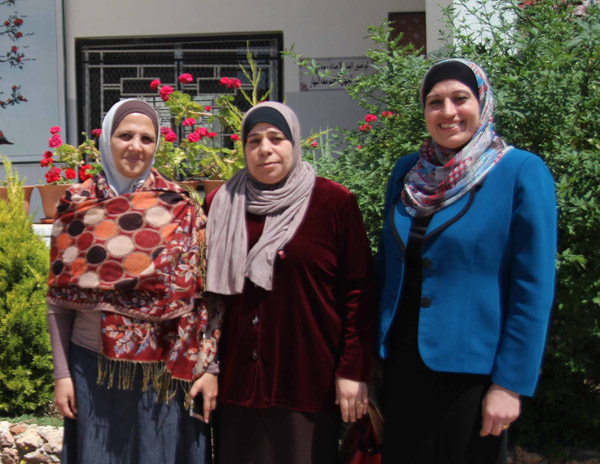AMMAN (UNESCO) — There is a lot to celebrate in Irbid these days. Within the Bani Obeid field directorate, data is consistently and timely collected to be entered into the “open Education Management Information System [EMIS]”, a UNESCO initiative that emerged from the need for better regulation in education systems due to growing complexity.
The strong Irbid team is led by Kholoud Shaawatah, the director of planning for the field directorate and a woman devoted to encouraging success in those around her. Samer Darwish works as an EMIS officer, supporting Kholoud closely through coordinating data collection and contributing to the strong results of this area.
With the support of the European Union and at the request of the Government of Jordan, UNESCO set up the initiative nearly three years ago to provide technical expertise during the restructuring of the country’s EMIS. With nearly 1.9 million students registered in basic and secondary education, 120,000 teachers and a substantial influx of refugees seeking continuing education opportunities in Jordan, ensuring student data's organisation and availability is more important than ever.
Rolling out open EMIS across the 7,246 schools in Jordan has been an "overwhelming success".
Safa Al Rabee, school principal and Rana Shraydeh, EMIS officer, support this valuable work at Al Husn Secondary School for Girls in northern Jordan. Safa is diligent in her follow-up, ensuring that open EMIS data is validated and providing rapid feedback to Kholoud.
For her part, Rana has gone to great lengths to perfect her EMIS knowledge and is proud to help others maximise the benefits of the system. She has worked hard to train teachers, ensuring that her area is excelling. “I enjoy the healthy competitive spirit felt between the areas,” said Rana. “It motivates us to try to achieve top results.”
It has not always been easy. At the beginning, problems with connectivity plagued the system and some teachers were entering data at home afterhours to ensure a stronger connection.
The system has made huge advances since these struggles and the detailed reports that are now generated were not available previous to the inception of open EMIS.
Kholoud says these reports make her daily life a lot easier. She highlights that open EMIS gives credibility to decisions taken at the Ministry and field directorate levels.
With the accurate data generated by the system, precise forecasting can be made about class formation in upcoming semesters. “Using the accurate student numbers produced by open EMIS, appropriate class sizes can be developed and quantities of teachers within schools can be allocated, which in turn leads to smarter school formation,” Kholoud explains.
To further combat overcrowding and increase mapping efforts across the Kingdom, a Geographic Information System (GIS) module is currently being finalised for the system. Among other tasks, the GIS feature will help the ministry to compare the number of students in a given district with the number of students enrolled in schools throughout the area, ensuring a reasonable distribution.
By enabling planners at the ministry to visualise indicator information, recommendations can be made on school closures or the transfer of students and teachers to nearby schools with similar grades, gender and adequate capacity.
The open EMIS is constantly evolving and behind each development, we find committed people like the Irbid team working hard to ensure the system’s continued success in Jordan.
